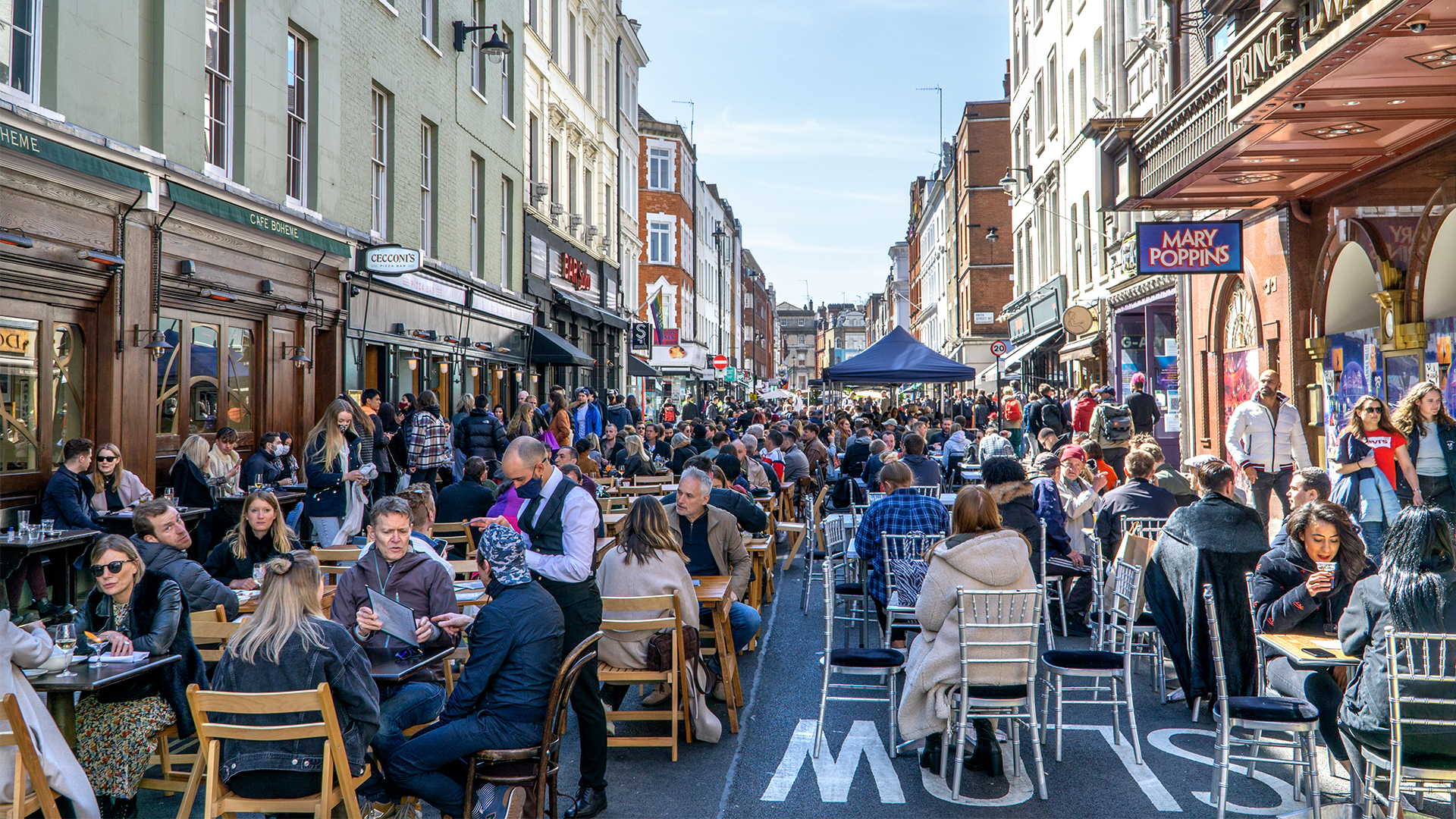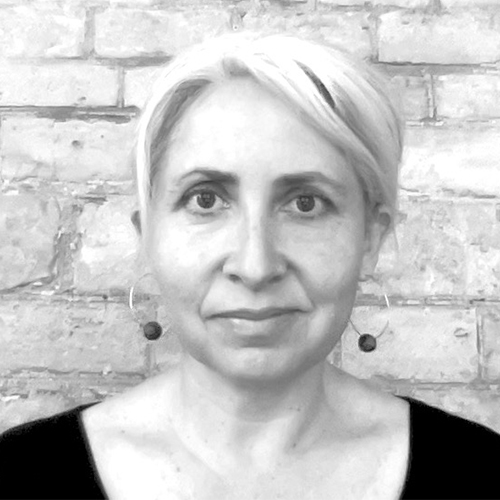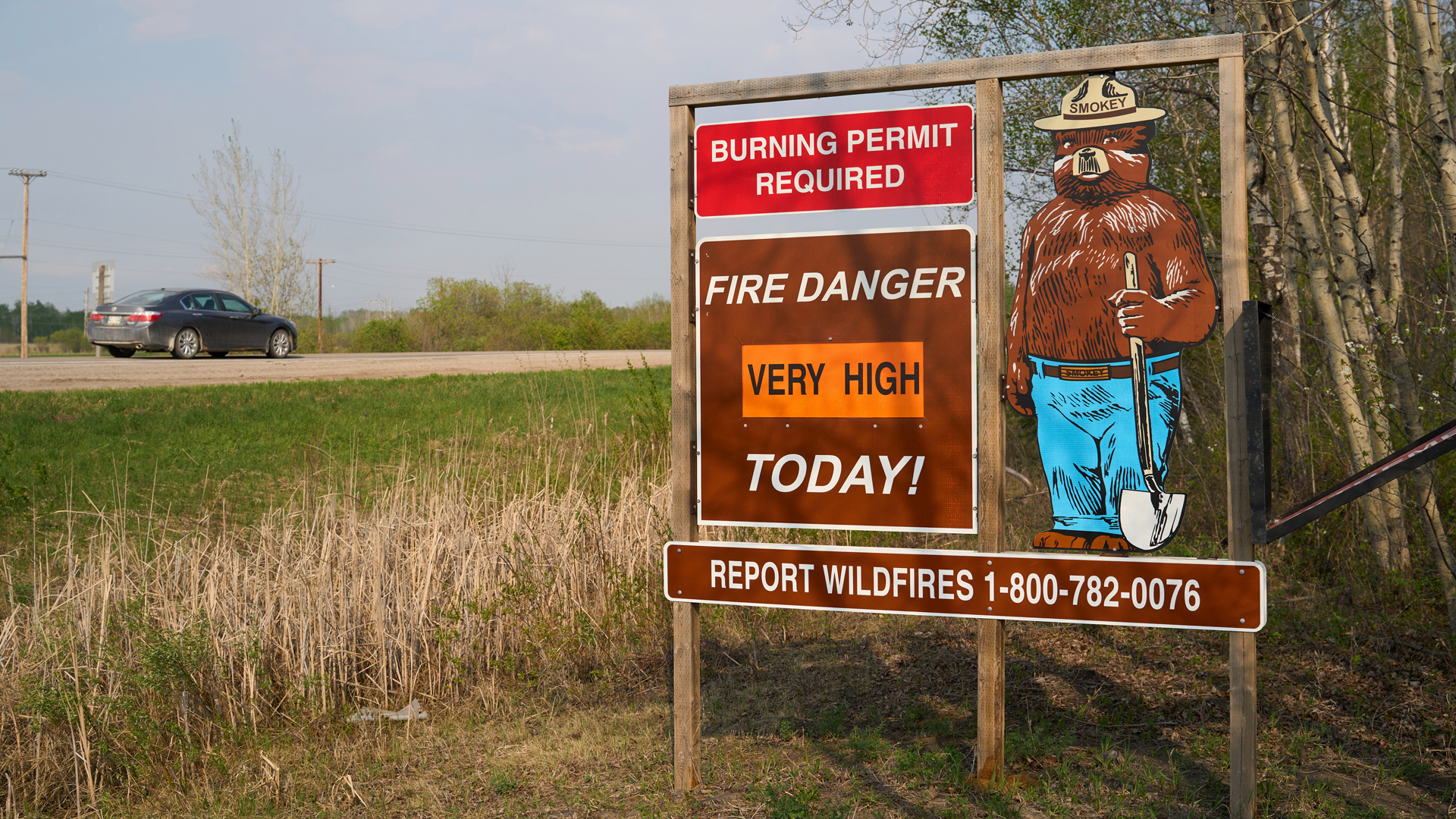
Mainstreet, downtown or the city centre. Even more than specific geographical references, they are important symbolic territories. Ground zero. The heart of our cities. Urban origin stories. Often, they are also the physical manifestation of our desires and fears – both our biases and our aspirations; our predominant ideologies and collective histories; layered and shifting over time, coming to life in the form of buildings, streets, parks, alleyways and onwards; then cemented in space, invisibly stamped, telling people (often in silence) who belongs and who does not.
What does it say about contemporary life that so many city centres have become quasi-monolithic, mostly catering to business, commerce, trade, transnationals, corporations? Becoming over time places that only certain people can afford? Perhaps one of the most important lessons of the pandemic has been to show us the perils of what we unthinkingly considered urban success.
The hollowing out of certain areas reminds us that city centres should not be only the economic hearts of our societies, but also the cultural hearts, the political hearts, the momentum-makers, the symbolic cores – multiple, hybrid, resilient and hyper-alive, designed for the best of times and the worst of times, too.
This smoothing out of our city centres – making them safer and more efficient, perhaps, but also more bland, generic and increasingly monolingual – started decades before the pandemic, of course. First came the absurd idea that cities should cater to cars above all else (“Forget the damned motor car, and build cities for lovers and friends,” is the quote often attributed to American urbanist Lewis Mumford in the ’50s, to much poetry, but not to much avail). Then came a quest to pull cities out of poverty, danger and debt, allowing market-first solutions to go on a rampage and pushing cities to optimize mainly for productivity and efficiency – and on occasions not much else.
This, in turn, has led cities to drive out multiplicity in the shape not only of urban typologies, but also in the form of human diversity. I toured London once with the fabulous Nicky Gavron – British activist and at one time deputy mayor of London – and she pointed out how even seemingly progressive policy (real estate developers having to also build public space when constructing a high rise, for example) has ended up devouring truly inclusive and open public spaces and left them dangling in corporate limbo.
As an advisor to London Mayor Sadiq Khan, she was also pained by the fact that necessary workers such as nurses, bus drivers were leaving the city in droves because they could no longer afford the living cost. “This is a huge urban crisis waiting to happen,” she told me back then. Indeed, it was.
René Boer, Dutch activist and architect, wrote recently in Volume magazine: “While neoliberal urbanism is in essence a political project, it has paradoxically given rise to the post-political city, in which ‘the urban’ has increasingly become a commodity and urban politics are deliberately undermined in favour of technocratic-economic measures. Its inhabitants are treated as consumers rather than citizens, who also need to work increasingly efficiently, which fuels the demand for smooth, friction-free urban spaces.”
I tend to agree. The answer to “what – and who – a city is for” seems to be an increasingly closed one (if also shiny and clean).
Have you noticed how easily smooth becomes hollow underneath?
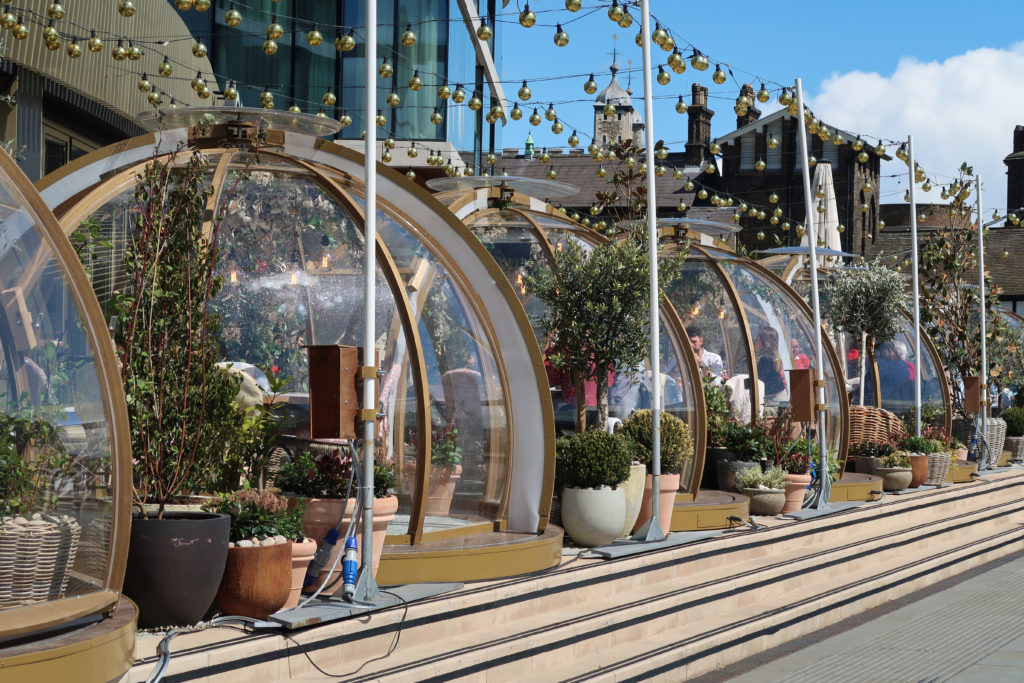
The opportunity of the pandemic
The pandemic has been relentless on many fronts. So as Oscar Wilde eloquently suggests in De Profundis, the least we can do is make sure sorrow and human suffering are not meaningless.
In that sense, seeing pedestrians, bikes and restaurant tables take over streets in cities across the world is certainly a refreshing sight. Even more so if we consider that in recent weeks, many cities like New York and Paris have decided to make these changes permanent.
There are other things to be optimistic about. The public realm has been revalued – from public health systems to public parks. Informal networks of care and solidarity have popped up in many neighbourhoods, reminding us that we need each other, that we are stronger together. Many social movements – like Black Lives Matter or La Marea Verde – have gathered force, resonating in cities across the world.
We have had to take a second look at the inequality of our cities, and certain core conversations – from the importance of designing cities with a gendered lens, to spatial justice – are finally gathering traction in wider circles.
Certain biases and paradigms do not feel quite as entrenched as they once were. A new wave of economists, including Mariana Mazzucato, have managed to create a wave of public conversation about the need for economics based on public purpose instead of corporate gain.
But we could – and we need – to go further.
Because for every instance of hope, there also exists a nemesis to hope. Racism against racialized communities in the U.S. and Canada. Escalating rates of family violence in Latin America. Insufficient government responses to befit the scale of the crisis. Dark forces of capitalism taking advantage of the precarious situation. This is a pivotal moment for a world struggling to define its main direction of travel in a (post) pandemic world. As vaccination rates increase and cases drop, will we try to rush back into the past, whatever the cost? Or will we act upon the intuition so prevalent during the start of the pandemic? The time has come to reimagine cities and societies on a planetary scale.
The urban political
For a long time, many have pretended that cities could be “solved” through proper management and a somewhat technocratic mindset. We were made to believe that urban efficiency and optimizing for the productivity of cities was a politically neutral agenda.
But a city, a polis, is of course an inherently political entity. A technocratic philosophy is also a deeply political stance.
In her essay Undoing the Demos: Neoliberalism’s Stealth Revolution, Wendy L. Brown, an American political theorist, points out that neoliberal rationality disseminates the model of the market to all domains and activities, even where money is not at issue. It “configures human beings exhaustively as market actors, always, only, and everywhere as homo oeconomicus.”
Though some might think she has gone too far when she claims that “neoliberalism is the rationality through which capitalism finally swallows humanity,” we must at least pause to reflect on how market-driven and profit-driven cities have paradoxically emptied out multiple city centres during the onset of the pandemic and perhaps even before that, with shifting trends toward e-commerce (the snake biting its own tail?). The combination of giving preference to profit-making businesses (buildings as parked currency, real estate interests as the major drivers of urban development) have managed to swallow up our city centres to a certain degree. Or at least have flattened them terribly.
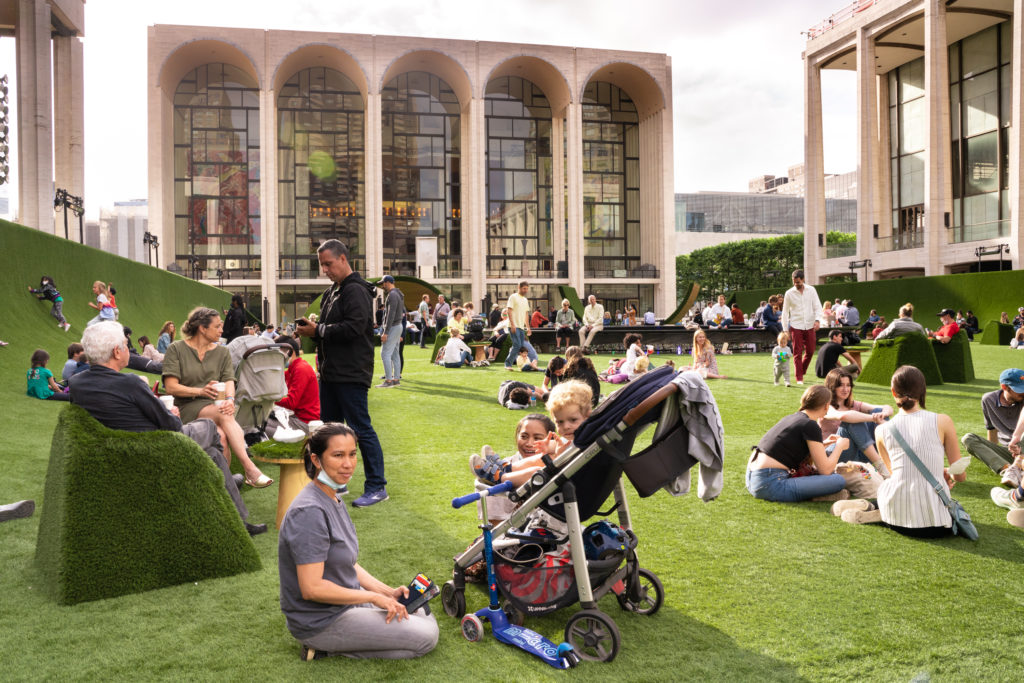
Inhabiting the voids
Paradoxically, the pandemic could become an opportunity to rethink the DNA of cities. These new urban voids of empty streets, empty storefronts, empty offices, empty apartments could finally give cities space (both literally and metaphorically) to reimagine their direction of travel.
A recent article in the New York Times attests to a potential dynamism – urban, social, creative – possible from within the gaps left in the wake of the pandemic. As New York was emptied of many of its wealthier and older inhabitants, and rent prices dropped, suddenly young people came back in droves. Many came back with pent-up energy, with ideas, with a desire for reinvention.
As the former chief creative officer of Mexico City, I am, of course, biased, but I do believe that cities need to actively support a spirit of experimentation, so necessary to the continuous renewal and vitality of urban life. To say nothing of the new inclusive policy that can be put in place in the gap. Lisbon, for example, has an interesting pandemic-inspired program to reclaim former Airbnb rentals for affordable housing. Some cities in Canada are imposing a tax on apartments left empty for more than six months. Buffalo has decided to impose a drastic parking reform with interesting results. All are a good start to a renewed answer to “who a city is for.”
We also need to rethink the invisible codes written into urban design itself. As the Canadian geographer Leslie Kern has pointed out, in regards to feminist cities: “city planners and architects can’t take the white, able-bodied cis man as the default subject and imagine everyone else as a variation on the norm. Instead, the margins must become the center.”
Cities need to support all types of social diversity. Not just for the sake of social justice – as the “right thing to do” – but also for the sake of creativity and inventiveness, for the sake of resilience and urban energy. The moment everything is anchored and cemented and expensive, there’s no place for play or experimentation. Diversity in all of its forms should be supported in different ways. (Sara Hendren mentioned in a recent phone conversation: “Most people think assistive technology is about ‘inclusion.’ But design for disability is a radically creative tradition of remaking the built world, and has led to innovations that have benefited all.”)
Diversity allows for the necessary expansiveness of urban life – multiple ways of being in the world, catering to drastically different life choices, bringing in a plethora of perspectives. Innovation writ large thrives on difference. It relies on cross-pollination of ideas, resources, disciplines, people, different ideas merging, different ideas in friction. In fact, studies have now proven the astounding benefits of having a diverse workforce. Now multiply that same principle at the urban scale.
We have an opportunity to reoccupy Wall Street, so to speak, by allowing for other types of city uses to pop up in the empty urban pockets that have been left behind. For starters, we can roll back some policy mistakes we have made. We can also think of novel acupunctural interventions that allow us to imagine the city from a different place, to bring other urban visions to life.
What happens in city centres has a way of influencing the DNA of the city as a whole. It is often a place where social imagination gets churned, concentrated, can travel to other neighbourhoods and even other cities. What if the transformations in city centres were to become a living metaphor and example for the type of societies we wish to become?
On urban imaginaries
Some years ago, I helped lead an effort to crowdsource Mexico City’s constitution. Besides allowing for different forms of public participation, we also created the “imagine your city” survey, asking 31,000 people across 1,400 neighbourhoods to tell us about what they love about Mexico City, as well as their deep concerns. We also asked them about how they imagined its future – and even though we were prompting for compelling futures, we got back mostly dystopian “Mad Max” scenarios.
This made me realize that urban imaginaries play an important role in urban life. Hard data is important, absolutely, but we need a more nuanced understanding of the subjective city that lives in people’s heads as well. Humans are storytelling animals. We make meaning through personal and collective narratives.
So how have our urban imaginaries shaped the city itself? In her essay, A City is Not a Computer, Shannon Mattern makes an interesting claim: “Why should we care about debunking obviously false metaphors? It matters because the metaphors give rise to technical models, which inform design processes, which in turn shape knowledges and politics, not to mention material cities.”
So could we centre our political imagination and social energies around other concepts, such as well-being or play? Instead of a bland one-size-fits-all city, or the standard smart city (blue and people-less), how could the urbanscape allow for multiple identities and ways of belonging?
Imagine, for example, that a whole city could restructure itself around care. This is less whimsical and more practical than it sounds. I am in the midst of advising the mayor of Bogotá´s team on behalf of the Bloomberg Global Mayors Challenge. It has been addressing social needs and the city’s needs from the perspective of care blocks, an impressive reorientation not only of policy and city services but also of the built environment and land use around women and economies of care.
“It is not only about recognizing and redistributing care but institutionalizing it to free up time and opportunities for caregivers. That is why the blocks are so important, so that they find all the services they need in their neighborhood, in a nearby perimeter,” says Bogotá Mayor Claudia López. Or as Diana Rodríguez Franco*, minister of Bogota’s women’s institute, pointed out in one of our recent meetings, we need to take better care of the women who are caring for us.
The fascinating thing is that this not only makes sense under the optics of human rights, but also in terms of city budgets. Stress leads to chronic illness that places huge burdens on health systems and taxpayers’ wallets.
“Allowing for space and time to strengthen or restore health, prevent disease and promote the consolidation of social networks of the caregiver, has two purposes: to respond to their individual care needs and give them new tools to manage their well-being and that of the person they care for. Better self-care practices promote a lower demand for health system services,” Alejandro Gómez López, the district secretary of health in Bogotá, told me in an interview. Think of the additional city revenues that would be possible if women’s time was freed up for paid work.
Projects such as these make visible the invisible, that both invent new services but also redistribute uses of the built environment.
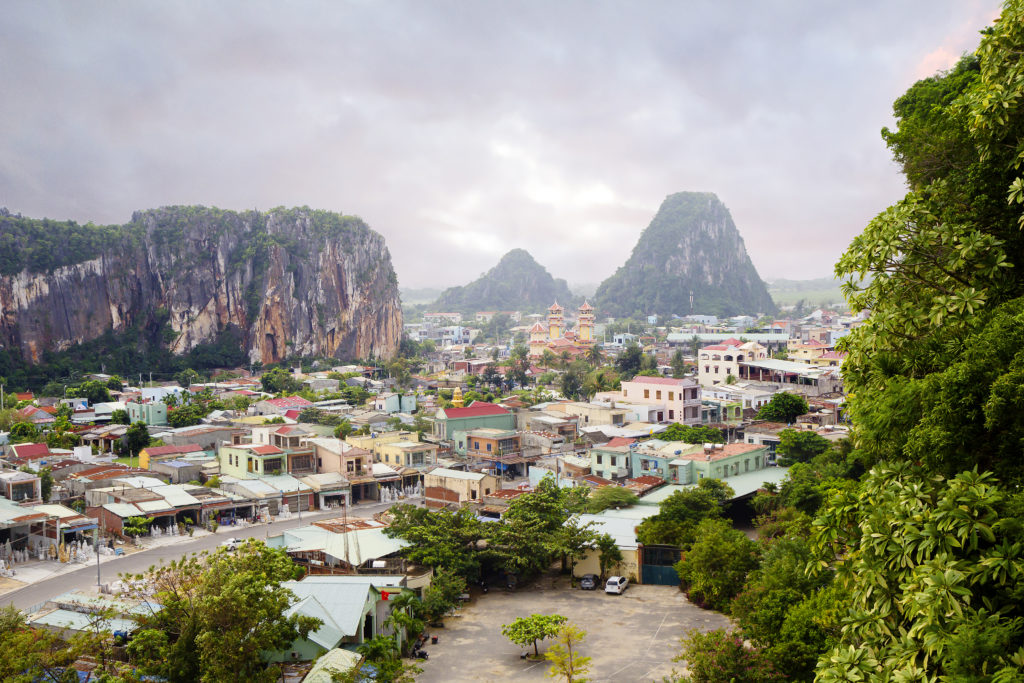
Expanding civic/public typologies
One of the most important lessons of the pandemic is that cities need to go beyond a logic of economics and efficiency, and instead have public purpose and civics at their core. Of course, economically healthy cities are fundamental, but a shift in priorities is necessary. Until recently, it was easy to think that democracy was on an inevitably progressive arch (if slower than some of us wished). But recent events have shown us that the global reality is more complicated than that.
This shows that there is much work to be done in rethinking civic capital, urban commons and public value, plus the role of the state in this. For starters, on an urban acupuncture level: using small-scale interventions to transform the larger urban context; determining what new types of public and civic spaces could be part of the urban repertoire; creating an imaginative symbiosis between physical infrastructure and novel ways of creating social relationships and horizontal ties with different purposes?
If we thought about feminist cities, care cities, playful cities, eco-cities (for example) what new urban forms could we imagine? The built environment can have the capacity to shape community coalitions, to organize social energy in different ways, to become reminders of different urban capacities that support diverse ways of being and belonging, of coming together.
This has historically been the role of places such as libraries, playgrounds, public schools. More recently, we have also seen the creation of food forests, community kitchens, maker spaces. But why has the repertoire of possibilities not been expanded and increased exponentially in recent decades? This is one of the themes I am in the midst of researching (and soon prototyping in several cities such as Helsinki and Da Nang).
In the future, these spaces could be part of a networked civics infrastructure, an infrastructure for the imagination. In the short term, these new types of places to gather could also recognize the importance of community ties. As Noreena Hertz wrote in The Lonely Century: Coming Together in a World that’s Pulling Apart, we should not underestimate the effects of loneliness: social isolation is as bad as smoking 15 cigarettes a day. It is also costing taxpayers billions a year.
This, and the crisis of democracy we are living through, makes a good case for the need to reimagine and expand opportunities for participation in collective life.
Can a city offer its citizens different ways of gathering around shared visions or common questions? How is a society prompted to imagine a life together, to jointly explore alternatives and possibilities that can enhance collective well-being?
Adding to the repertoire and diversity of public and civic spaces can help create a sense of agency, empower people and explore how to release civic capital and public assets. But, most importantly as a process, it can also add a spirit of experimentation and play, all while articulating micropolitics and social action, allowing for the collective development of people’s will in a way that current political structures do not.
Rehearsing the future
How do we reinvent our societies, under what principles and with which vocabulary in the wake of a historical global pandemic? What was it that during those first months of shock that we longed for and revalued? What tore us apart, what brought us together? What made us flourish (or at least survive) and what fragilities and dark edges did we unearth? What functioned as magnets? What as repellents? How will we fill those urban gaps?
Those questions can be some of our clues, the first traces for future blueprints, to reimagine how we want our cities – and their centres, those symbolic cores – to speak to us now.
Note to readers: An earlier version of this article misidentified Diana Rodríguez Franco.
This article is part of the Reshaping Canada’s Cities After the Pandemic Shockwave special feature.





